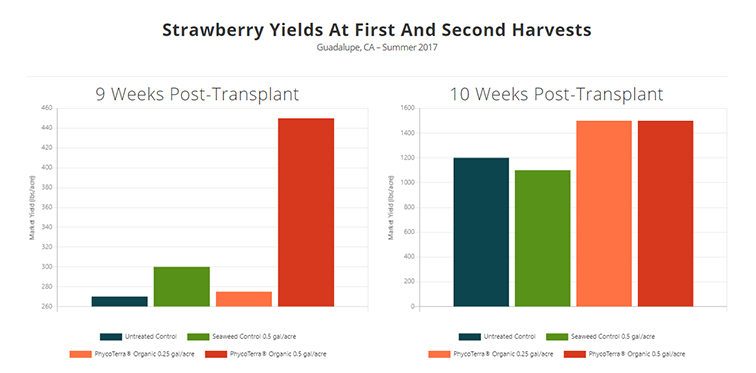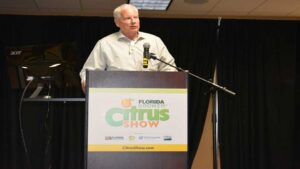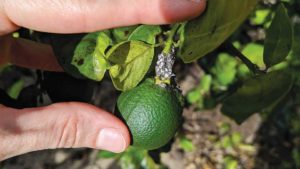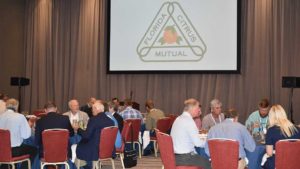All Hands On Deck To Save Florida Citrus
[blackoutgallery id=”69666″]
-
-
1 of 23
Sign Of The Times
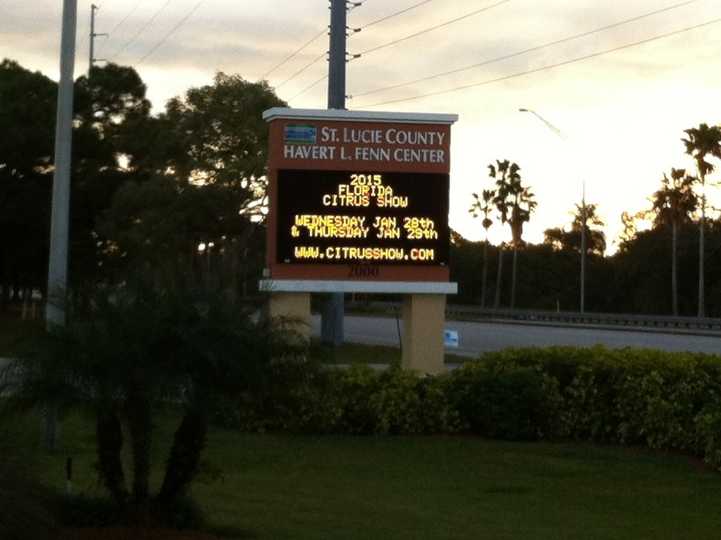
Drivers up and down Virginia Ave. in Ft. Pierce couldn't miss what was going on at the Havert L. Fenn Center.
Photo by Paul Rusnak -
2 of 23
Come In

Bright-blue skies greeted attendees for both days of the 2015 Florida Citrus Show.
Photo by Paul Rusnak -
3 of 23
Arts And Crafts

Upon entering the Havert L. Fenn Center, Florida Citrus Show attendees were drawn to the Florida Highwaymen booth. Artist Kelvin Hair answered questions and sold some pieces.
Photo by Paul Rusnak -
4 of 23
Sign Me Up

Nearly 600 people pre-registered for the two-day event. There were plenty who registered on-site, too.
Photo by Paul Rusnak -
5 of 23
Fresh From Florida
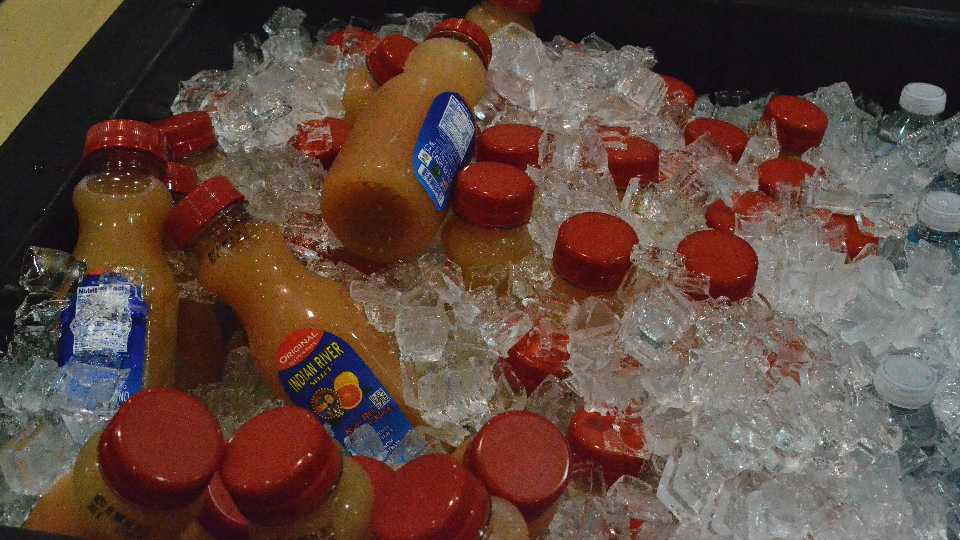
Some of Indian River's finest helped quench the thirst of show-goers.
Photo by Paul Rusnak -
6 of 23
Great Gathering
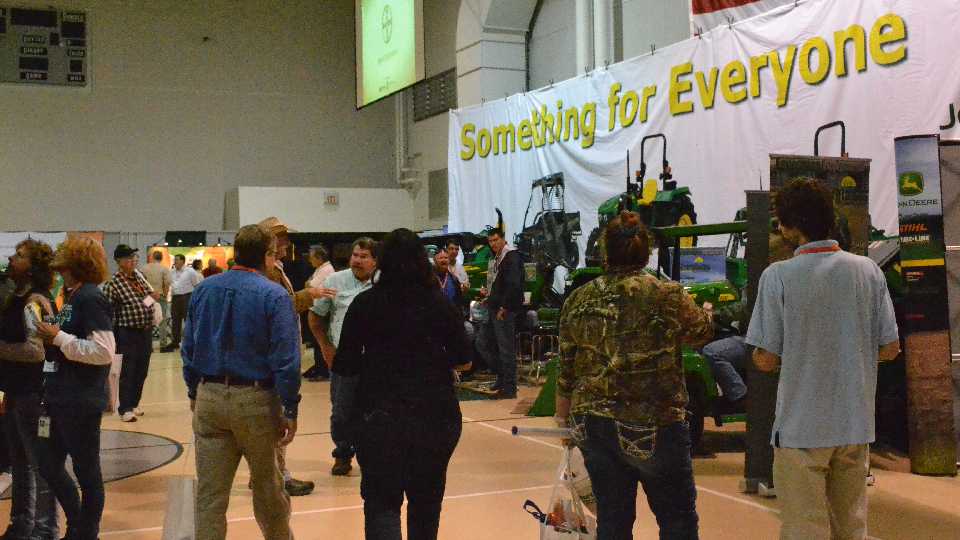
Nearly 800 attendees participated at this year's Florida Citrus Show. In addition, a record number of supplier exhibits (nearly 100) filled the tradeshow area inside and outside the building.
Photo by Paul Rusnak -
7 of 23
Class Is In Session
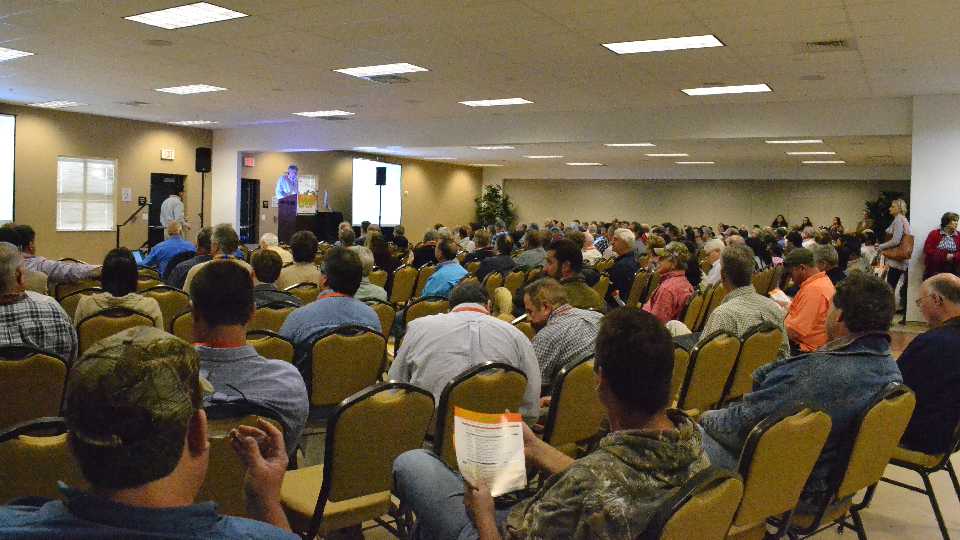
The education session room was running near capacity throughout the duration of the Show.
Photo by Paul Rusnak -
8 of 23
Warm Welcome
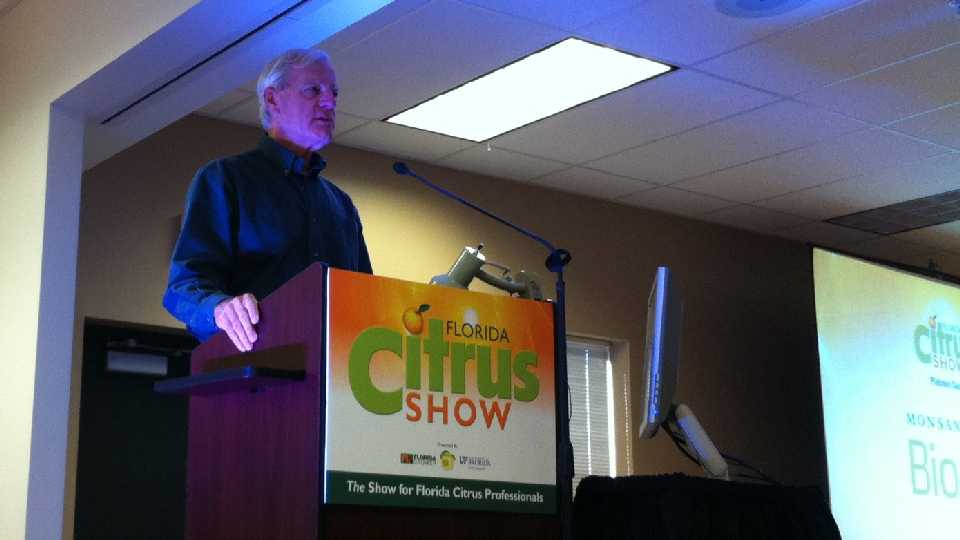
Doug Bournique, executive director of the Indian River Citrus League, provided the opening remarks for the Florida Citrus Show. He stressed the importance of growers using available resources such as USDA's Tree Assistance Program, and also pointed out that water could be the next big "crop" for the Sunshine State.
Photo by Paul Rusnak -
9 of 23
Inside Perspective
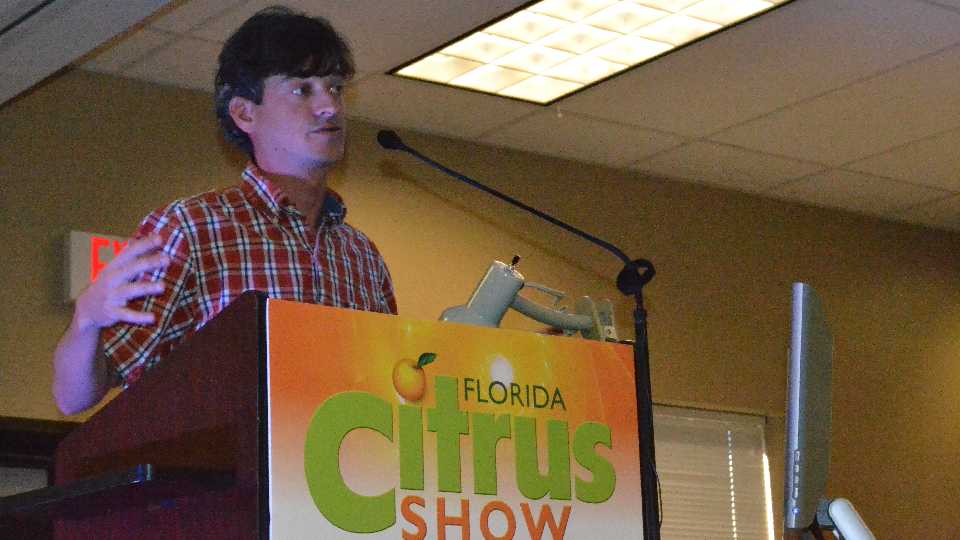
UF/IFAS assistant professor Barrett Gruber offered an interesting argument for producing citrus under screenhouses. Promising data was divulged during his presentation regarding psyllid control, lack of HLB presence, no detectable leafminer damage, and higher yield among trees under cover.
Photo by Paul Rusnak -
10 of 23
Big Iron

Numerous large pieces of equipment, like this beauty at the Kubota booth, elicited oohs and ahhs from admirers inside and outside the Show facility.
Photo by Paul Rusnak -
11 of 23
The Citrus Social Network
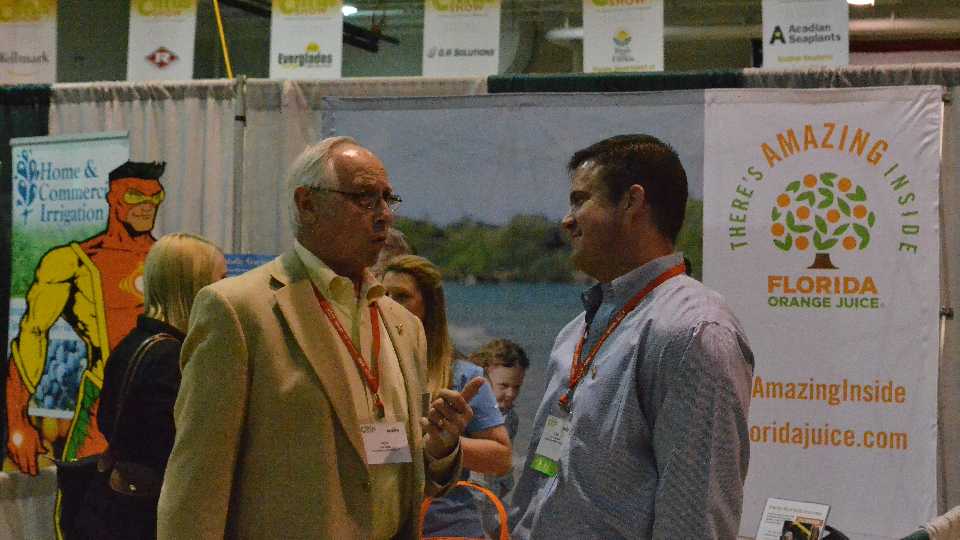
Ron Hamel of the Gulf Citrus Growers Association [left] talks business with FDOC executive director Doug Ackerman during a break at the Florida Citrus Show. "Captain Citrus" looks on in the background.
Photo by Paul Rusnak -
12 of 23
Savory Samples
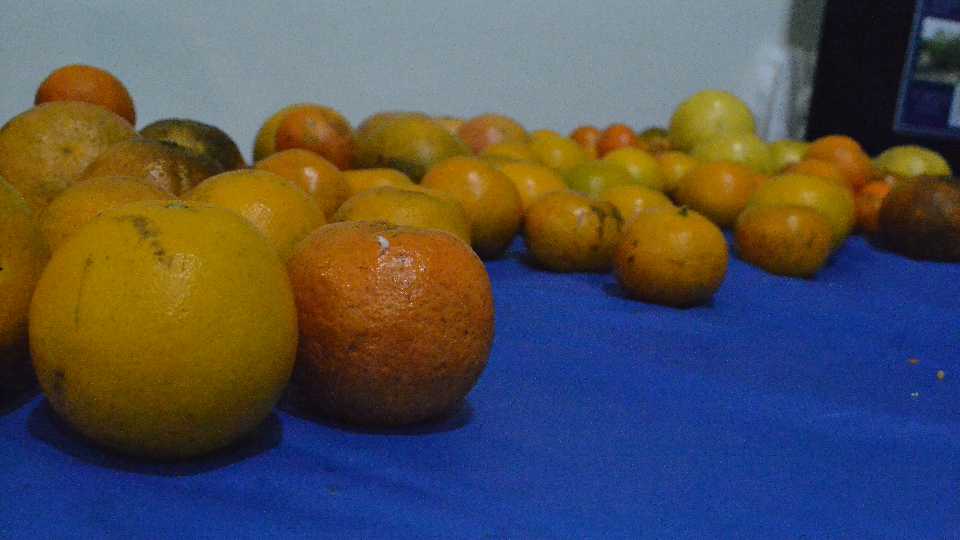
Once again, fruit breeders from UF/IFAS and USDA-ARS set out citrus variety samples during Day 1 of the Florida Citrus Show. A smorgasbord of tasty tangerines, tangy grapefruit, and plump pummelo adorned the tabletops for attendees to taste and critique.
Photo by Paul Rusnak -
13 of 23
On-The-Spot Learning
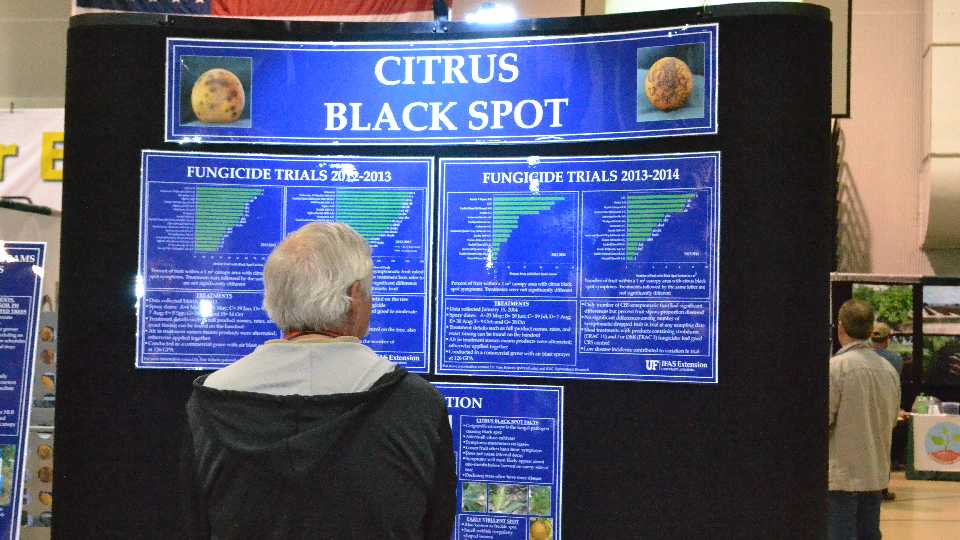
The UF/IFAS booth is always one of the most dynamic displays on the tradeshow floor. There is a load of information everywhere you look.
Photo by Paul Rusnak -
14 of 23
Show Parking Ahead

If counting cars in the parking lot was a way to measure success of the Florida Cirus Show, then it's safe to say the 2015 rendition knocked it out of the park. By the way, the building way in the distance is the Show facility.
Photo by Paul Rusnak -
15 of 23
Something's Cookin'

BBQ is a staple for any good Florida agriculture get-together. The aroma billowing from the smoker outside the Florida Citrus Show signaled what was to come at lunchtime.
Photo by Paul Rusnak -
16 of 23
Picture This
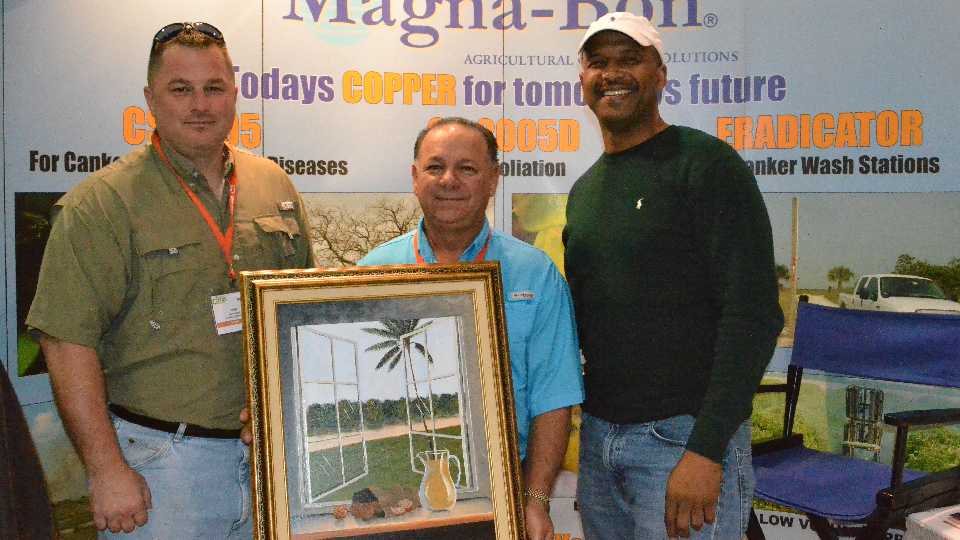
Magna-Bon sponsored the Florida Highwaymen painting giveaway at the 2015 Florida Citrus Show. The lucky winner [far left] picks up his prize from Frank Miele of Magna-Bon [center] and Florida Highwaymen artist Kelvin Hair.
Photo by Paul Rusnak -
17 of 23
A Receptive Crowd
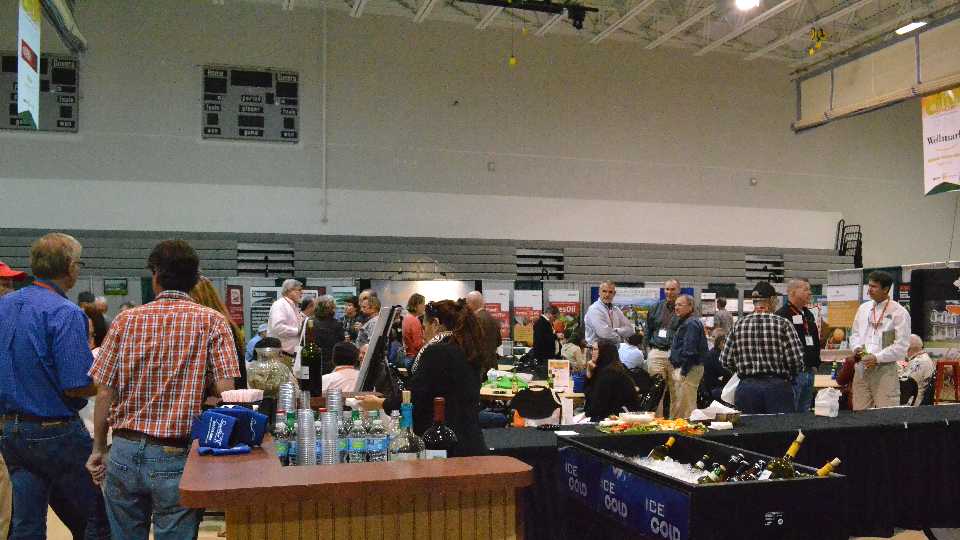
For the second year in a row, Dow AgroSciences sponsored a cocktail reception in the center of the tradeshow floor at the end of Day 1. Attendees were more than happy to stick around for good food, drink, conversation, and more prize giveaways.
Photo by Paul Rusnak -
18 of 23
Painting Demo
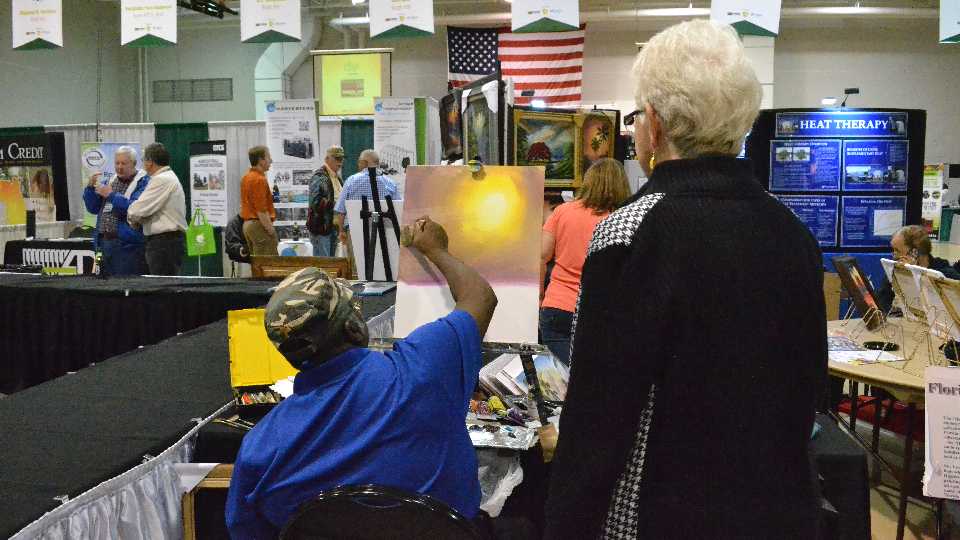
During the cocktail reception, original Florida Highwaymen artist R.L. Lewis put on a show himself with a painting demo. Each paint stroke brought the work more and more to life.
Photo by Paul Rusnak -
19 of 23
Just Rewards

Florida Highwaymen artist R.L. Lewis [left] took time off from his demo to give away one of his other original pieces. The winner of this beautiful Florida landscape painting knows he is walking away with a valuable work of art. Photo by Paul Rusnak
-
20 of 23
Grower Panel Discussion
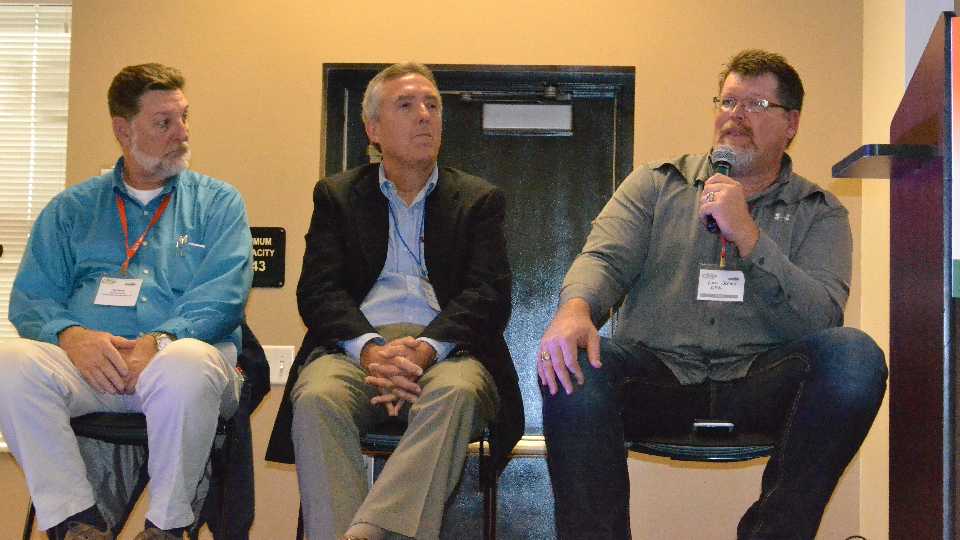
One of the highlights from Day 2 of the Florida Citrus Show education sessions was the grower panel moderated by Florida Grower editor Frank Giles. [From left] Tom Stopyra, Packers Of Indian River; Tom Jerkins, Premier Citrus; and Lee Jones, Gardinier Florida Citrus; engaged in a candid exchange on strategies they use to maintain production in HLB-infected groves. Panel members not pictured include Daniel Scott, Scott Citrus Management; and Courtney Forget, Cassens Grove Service. Photo by Paul Rusnak
-
21 of 23
Safe & Sound

The Show's grand prize giveway was once again provided by Everglades Farm Equipment: a John Deere gune safe valued at nearly $1,200. An eager crowd gathered around during the drawing. The winner was not onsite when his name was called, but was pleasantly surprised when he received the phone call informing him about his new home addition.
Photo by Paul Rusnak -
22 of 23
Haven't I Seen That Guy Somewhere?
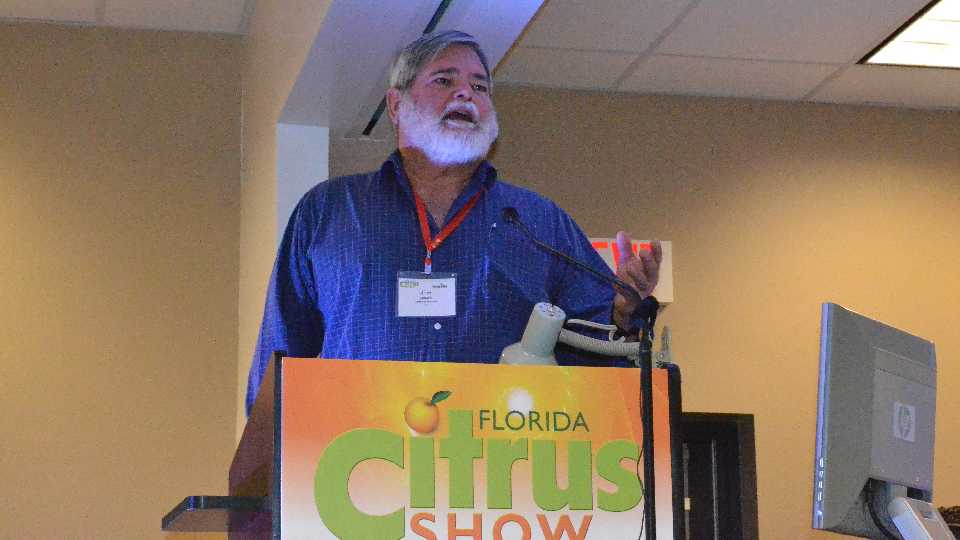
Jim Syvertsen, CRDF and UF/IFAS emeritus, saw plenty of time up on stage during the education sessions. He participated in a panel discussion on potential HLB solutions in the pipeline; led a presentation on the 40,000-foot-view of HLB solutions; and presented new research developments in thermotherapy.
Photo by Paul Rusnak -
23 of 23
Please Come Again
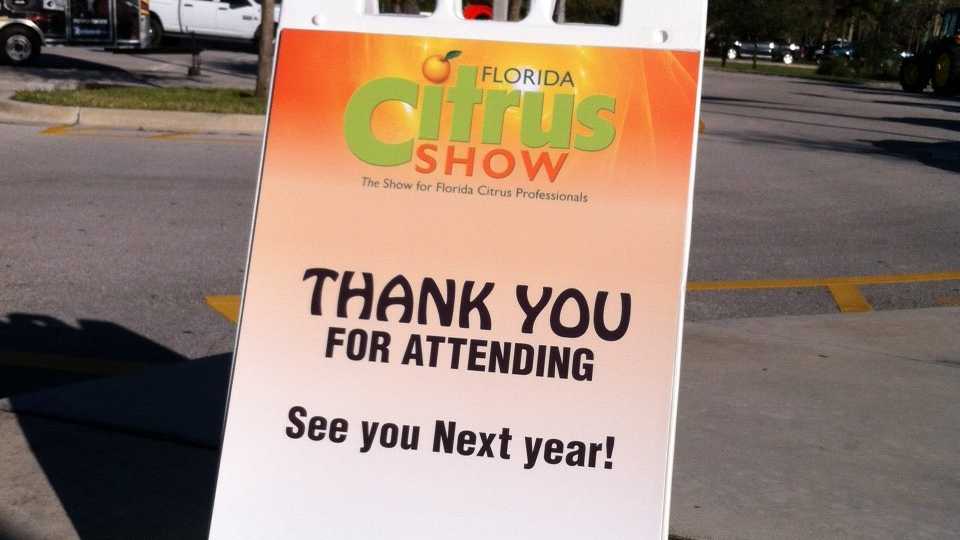
The 2016 Florida Citrus Show is slated for Jan. 27-28.
Photo by Paul Rusnak
View all
Sign Of The Times
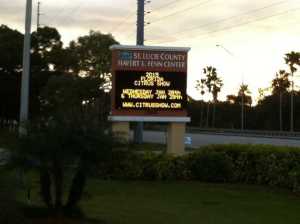
Come In
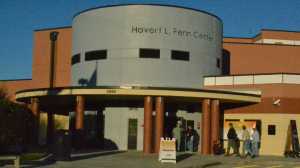
Arts And Crafts

Sign Me Up
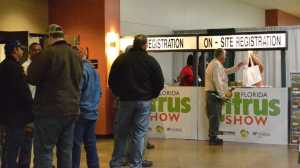
Fresh From Florida
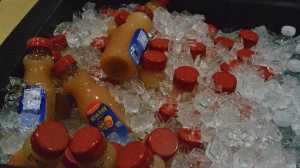
Great Gathering
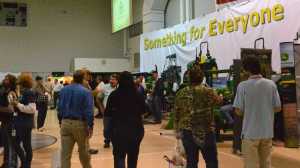
Class Is In Session
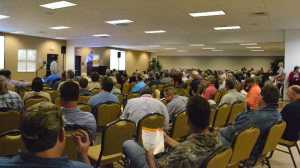
Warm Welcome
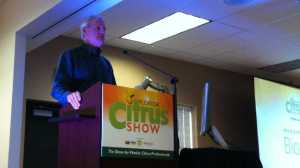
Inside Perspective
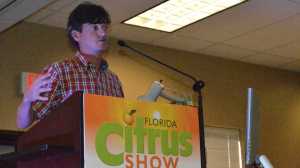
Big Iron

The Citrus Social Network

Savory Samples
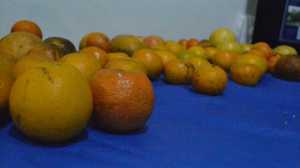
On-The-Spot Learning
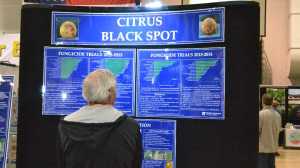
Show Parking Ahead
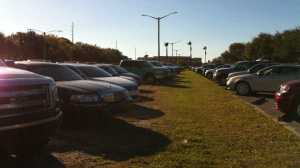
Something's Cookin'

Picture This
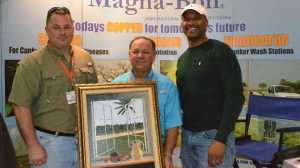
A Receptive Crowd
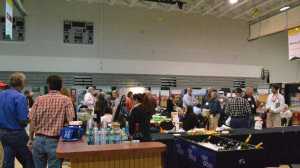
Painting Demo
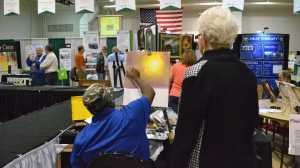
Just Rewards

Grower Panel Discussion
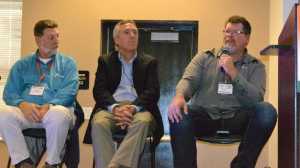
Safe & Sound

Haven't I Seen That Guy Somewhere?
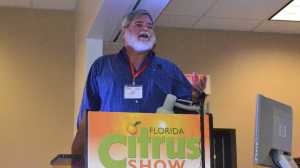
Please Come Again
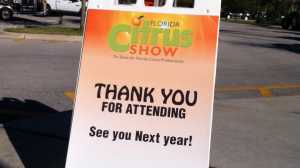
With a $10 billion a year industry at stake, last week’s Florida Citrus Show couldn’t have come at a better time. Last month’s USDA crop forecast is predicting a historically low output for oranges, and the next forecast (likely to drop the crop even further) is coming down the pike fast. The alarm has been sounded, and the sense of urgency among attendees couldn’t be missed.
Nearly 800 participants were provided the chance to circle the wagons and come away with new strategies as well as a refreshed sense of optimism over the course of the two-day gathering presented by Florida Grower, UF/IFAS, and the Indian River Citrus League at the Havert L. Fenn Center in Ft. Pierce.
While the tradeshow area (which boasted its own record number of exhibitors) was bustling, the educational session room remained packed from start to finish, showing the importance of topics being discussed. Covering a range of information that included management strategies, insect control, living with HLB, and promising treatments to reduce or eliminate HLB symptoms, a few sessions stood out as highlights.
A GMO Citrus Tree?
Ed Stover, USDA-ARS, gave an interesting presentation about the ongoing research regarding genetically engineering citrus with HLB resistance. GMOs are a touchy subject for many. However, in order to save citrus, this method might be the ultimate answer.
Stover gave it straight to the eager audience in his own words (not USDA’s) about the prospect of a GMO citrus tree and how that might play out:
- “It likely won’t be available until at least 3 to 8 years;
- Initial adoption will be controversial and may limit some markets. There will be a need to have very substantial benefits and/or specific markets targeted;
- As with all disease control, there will be an ongoing evolution of improved HLB-resistant citrus cultivars;
- As methods are refined, transgenes will precisely target priority traits, with routine multiple trait stacking;
- Ultimately, almost all crops will be transgenic, and their use will reduce unwanted environmental impacts, increase yields, and enhance health benefits.”
Keeping Psyllids In Check
CREC’s Michael Rogers’ presentation about new research and the latest recommendations for psyllid control included analysis of Bayer’s new insecticide, Sivanto. Rogers pointed out that the product has an advantage due to its ability to be applied during bloom.
Studies, so far, have not revealed any evidence of cross-resistance, according to Rogers.
The product, which does have EPA registration, still needs to work through the Florida system.
“The goal is to have this registered for use by bloom this year,” Rogers concluded.
Can’t Forget About Canker
Though HLB rules the roost when it comes to citrus diseases, canker is still a force to be reckoned with, especially in the Indian River citrus production area. In a presentation covering citrus canker and phytophthora control strategies, Jim Graham, UF/IFAS, brought up the development of a new product called “Zinkicide.”
Invented by University of Central Florida assistant professor Swadeshmukul Santra, Graham said the antimicrobial product containing oxide of zinc could be an alternative to copper treatments. “It’s very bioactive,” he said.
Early studies on canker revealed some “very exciting results,” Graham added.
More to come on this as information becomes available.
♦ Click here to see all the tweets using the #FloridaCitrusShow hash tag ♦
Growers Tell It Like It Is
During the second day, the grower panel drew a standing-room-only crowd to the session room. Moderated by Florida Grower’s Frank Giles, the participants included Tom Stopyra, Packers Of Indian River; Tom Jerkins, Premier Citrus; Lee Jones, Gardinier Florida Citrus; Daniel Scott, Scott Citrus Management; and Courtney Forget of Cassens Grove Service.
While the conversation focused on what the growers themselves were doing to maintain production in their HLB-infected groves, Jerkins helped put a positive exclamation point to the end of the grower panel by giving a plug to all the men and women who have been working hard to find a cure for HLB.
“The scientific community (USDA and UF/IFAS) is doing a lot,” he said. “If not for these mitigation strategies, we might be out of business. It is all we have. I wanted to make sure the scientists don’t discouraged. Yes, we are discouraged, but I want to keep them pumped up. They really have the back-end covered. It is just this little piece in the middle that we need. It is coming. There are therapies that are going to be available to us in 2016, maybe 2015. They will come in waves and will be improving. Once we fill that gap, I think we are going to be in good shape.”
Subscribe Today For

Paul Rusnak is the Senior Online Editor for Meister Media Worldwide's Specialty Crops Division, which consists of American Vegetable Grower, American Fruit Grower, and Greenhouse Grower magazines, all Meister Media brands. He is based in Northeast Florida. See all author stories here.






